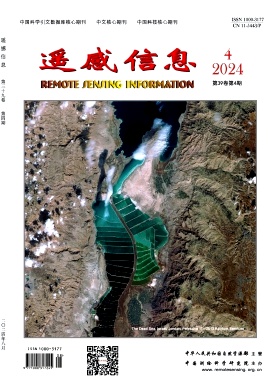利用共轭梯度进行三维电磁反演
引用次数: 0
摘要
在大规模三维电磁反演问题中,直接反演包含模型灵敏度元素的完整最小二乘系统矩阵是不可能的。因此,必须采用迭代方法。对于反问题,作者倾向于线性或非线性(NL) CG方案,这取决于应用。在NL CG方案中,每个松弛步骤都需要目标函数的梯度以及确定最优模型更新所需的单变量线搜索。给出了基于这两种方法的解决方案示例。本文章由计算机程序翻译,如有差异,请以英文原文为准。
3D electromagnetic inversion using conjugate gradients
In large scale 3D EM inverse problems it may not be possible to directly invert a full least-squares system matrix involving model sensitivity elements. Thus iterative methods must be employed. For the inverse problem, the authors favor either a linear or nonlinear (NL) CG scheme, depending on the application. In a NL CG scheme, the gradient of the objective function is required at each relaxation step along with a univariate line search needed to determine the optimum model update. Solution examples based on both approaches are presented.
求助全文
通过发布文献求助,成功后即可免费获取论文全文。
去求助
来源期刊
自引率
0.00%
发文量
3984
期刊介绍:
Remote Sensing Information is a bimonthly academic journal supervised by the Ministry of Natural Resources of the People's Republic of China and sponsored by China Academy of Surveying and Mapping Science. Since its inception in 1986, it has been one of the authoritative journals in the field of remote sensing in China.In 2014, it was recognised as one of the first batch of national academic journals, and was awarded the honours of Core Journals of China Science Citation Database, Chinese Core Journals, and Core Journals of Science and Technology of China. The journal won the Excellence Award (First Prize) of the National Excellent Surveying, Mapping and Geographic Information Journal Award in 2011 and 2017 respectively.
Remote Sensing Information is dedicated to reporting the cutting-edge theoretical and applied results of remote sensing science and technology, promoting academic exchanges at home and abroad, and promoting the application of remote sensing science and technology and industrial development. The journal adheres to the principles of openness, fairness and professionalism, abides by the anonymous review system of peer experts, and has good social credibility. The main columns include Review, Theoretical Research, Innovative Applications, Special Reports, International News, Famous Experts' Forum, Geographic National Condition Monitoring, etc., covering various fields such as surveying and mapping, forestry, agriculture, geology, meteorology, ocean, environment, national defence and so on.
Remote Sensing Information aims to provide a high-level academic exchange platform for experts and scholars in the field of remote sensing at home and abroad, to enhance academic influence, and to play a role in promoting and supporting the protection of natural resources, green technology innovation, and the construction of ecological civilisation.

 求助内容:
求助内容: 应助结果提醒方式:
应助结果提醒方式:


